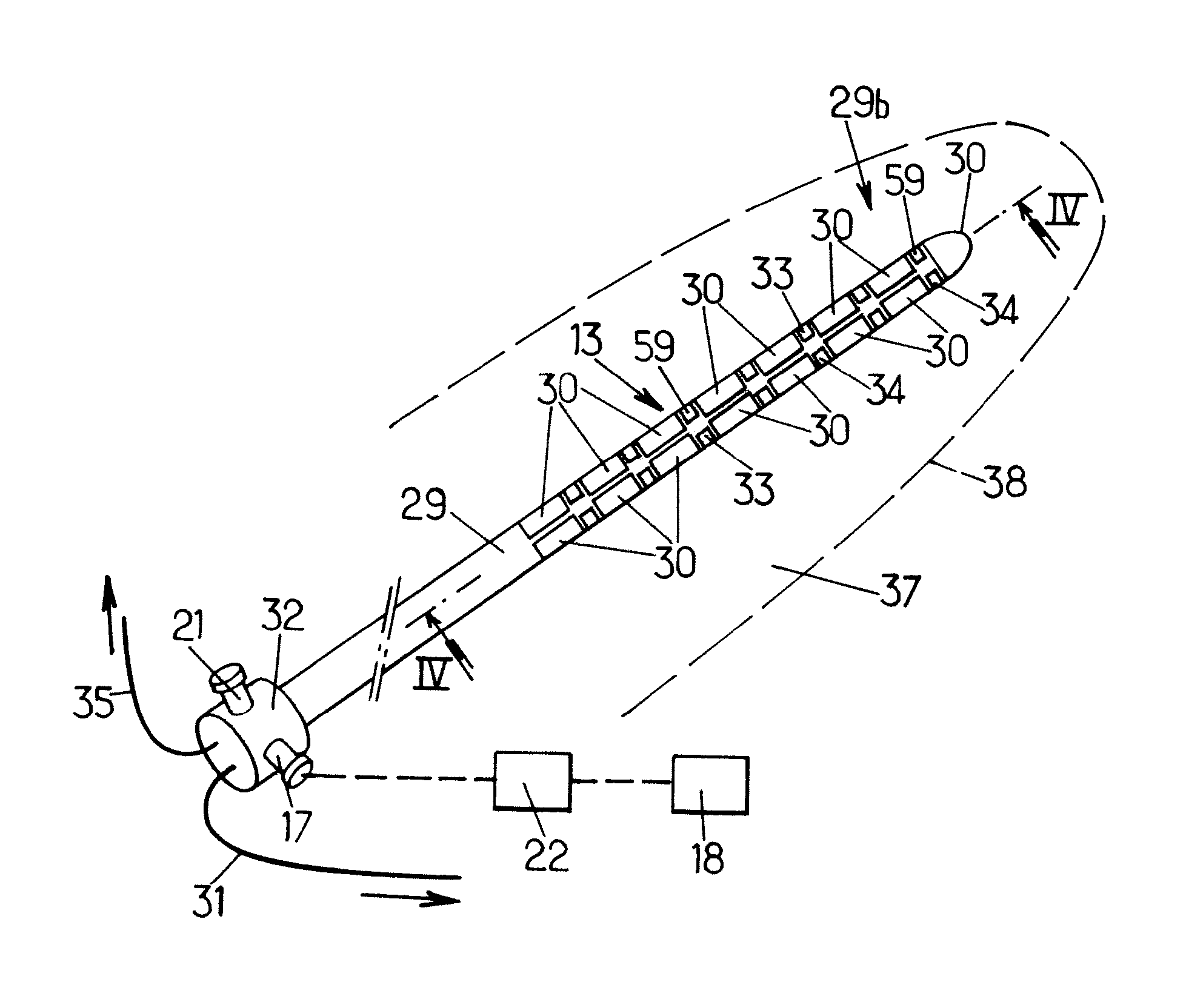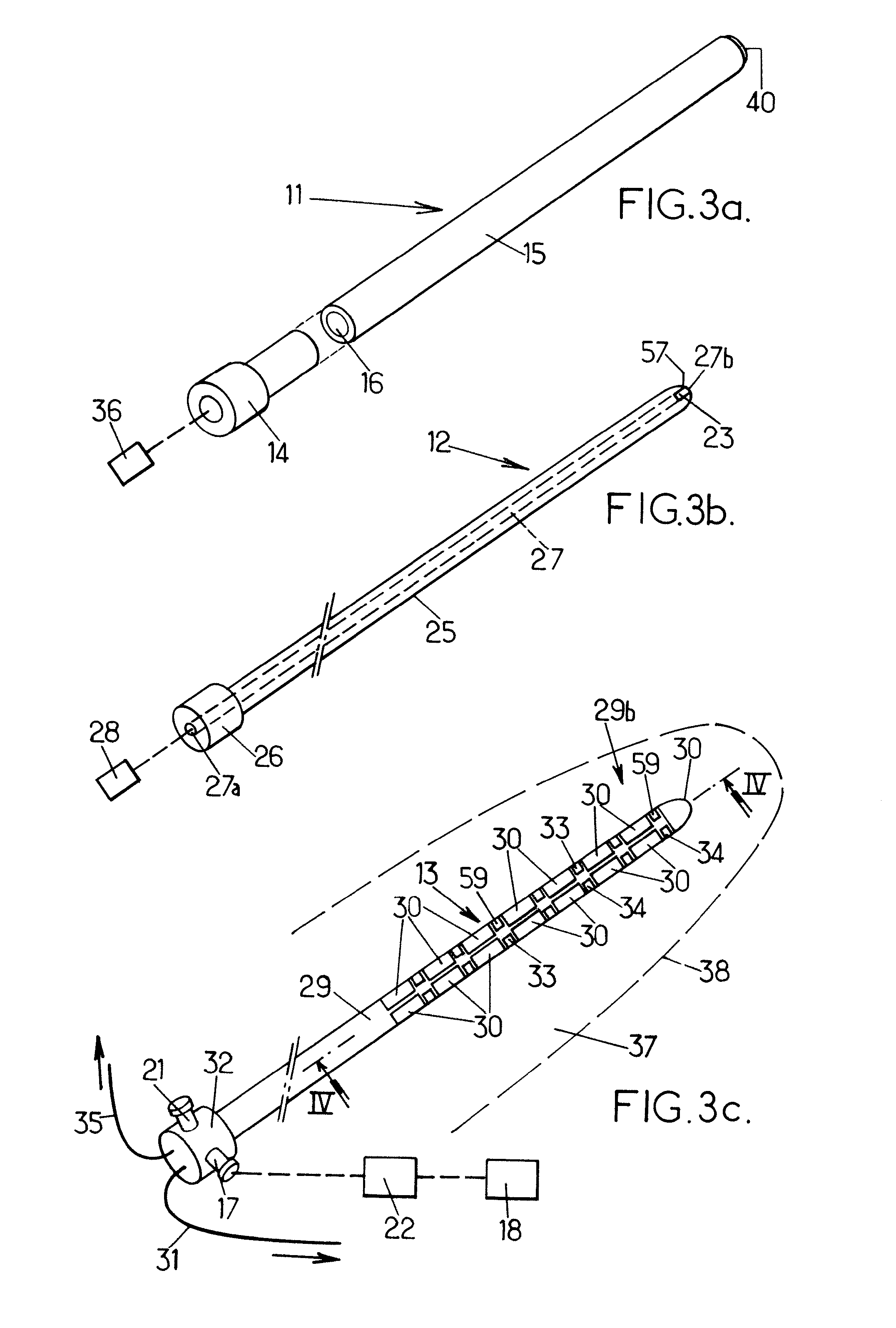Medical system comprising a percutaneous probe
a technology of percutaneous interstitial probes and medical systems, which is applied in the field of medical systems comprising percutaneous probes, can solve the problems of inconvenient use, poor interest in percutaneous interstitial probes, and inconsistent inconvenient treatment monitoring, and achieve the effect of preventing interpatient contamination
- Summary
- Abstract
- Description
- Claims
- Application Information
AI Technical Summary
Benefits of technology
Problems solved by technology
Method used
Image
Examples
first embodiment
[0068] as shown on FIGS. 3a, 3b and 3c, the probe 6 comprises a plurality of components: an applicator 11 (FIG. 3a), a mandrel 12 (FIG. 3b), and an ultra-sound device 13 (FIG. 3c).
[0069]The applicator 11 comprises a proximally-located back portion 14 and a somehow cylindrical body 15 defining an internal cylindrical cavity 16 which extends throughout the body 15 to a tip in which an end opening 40 is formed.
[0070]The medical system can further comprise a continuous pump 36 to be placed in fluid communication with the cavity 16 of the applicator 11, or removed therefrom. The pump can thus be operated to collect tissue fragments which can later be analyzed, for example by the clinician, to provide tissue information.
[0071]The pump 36 can be operated to extract any material to be extracted from the patient, such as, for example, air bubbles that artifact images, and / or inject into the patient suitable liquids.
[0072]The inner mandrel 12 is made of a rigid material and is shaped so as to...
fourth embodiment
[0094]In this fourth embodiment, the probe still comprises the rigid mandrel 12 of the two previous embodiments.
[0095]A fifth embodiment is partially shown on FIG. 10. This fifth embodiment differs from the third or fourth embodiment in that it has no side openings.
[0096]FIG. 11a partially shows a sixth embodiment of a device 39. When compared to the device of the fifth embodiment, this sixth embodiment differs by a concave arrangement of the transducers, for example in a central portion of the device 39. For example, no sensors are found in this central portion. Thus, instead of being purely cylindrical, the body 15 has, in this embodiment, a thinned central portion. According to another embodiment, as shown on FIG. 11b, the central portion could be convex.
[0097]Such convex or concave shapes could be used for any of the ultra-sound carrying components of the above embodiments.
[0098]It is contemplated that other geometries could be used provided the ultra-sound device is still able ...
PUM
 Login to View More
Login to View More Abstract
Description
Claims
Application Information
 Login to View More
Login to View More - R&D
- Intellectual Property
- Life Sciences
- Materials
- Tech Scout
- Unparalleled Data Quality
- Higher Quality Content
- 60% Fewer Hallucinations
Browse by: Latest US Patents, China's latest patents, Technical Efficacy Thesaurus, Application Domain, Technology Topic, Popular Technical Reports.
© 2025 PatSnap. All rights reserved.Legal|Privacy policy|Modern Slavery Act Transparency Statement|Sitemap|About US| Contact US: help@patsnap.com



